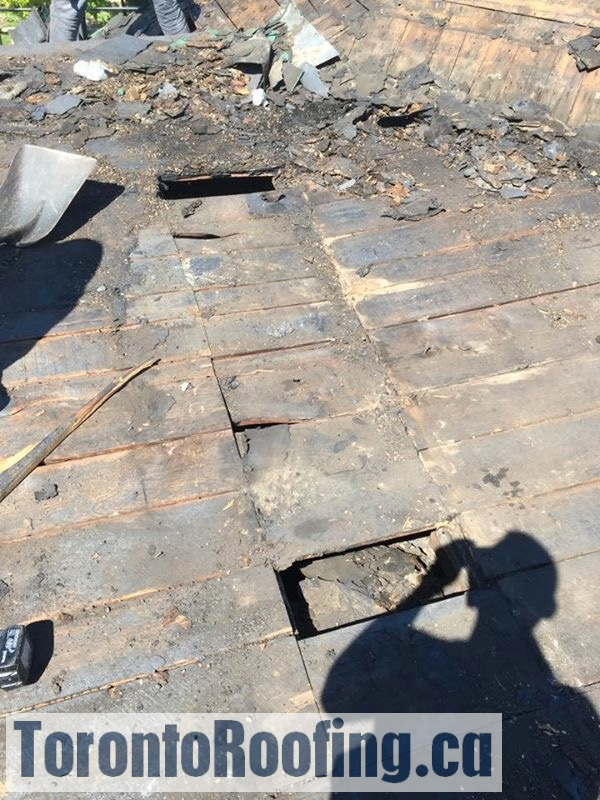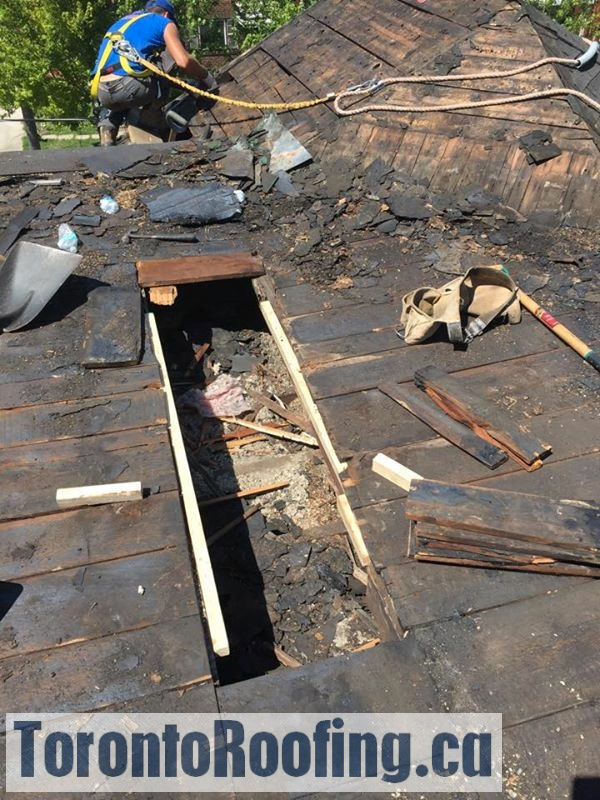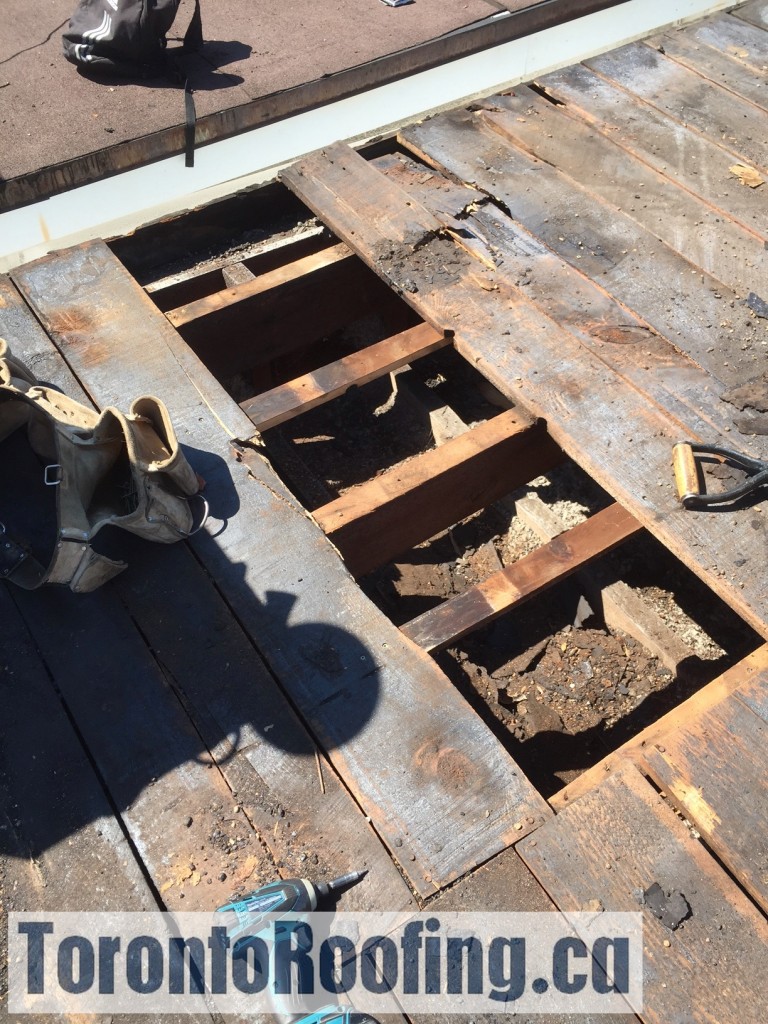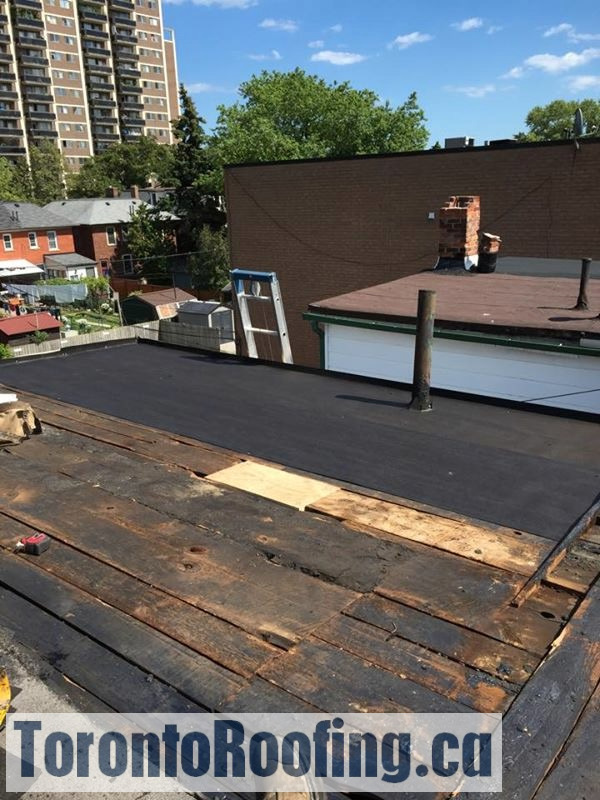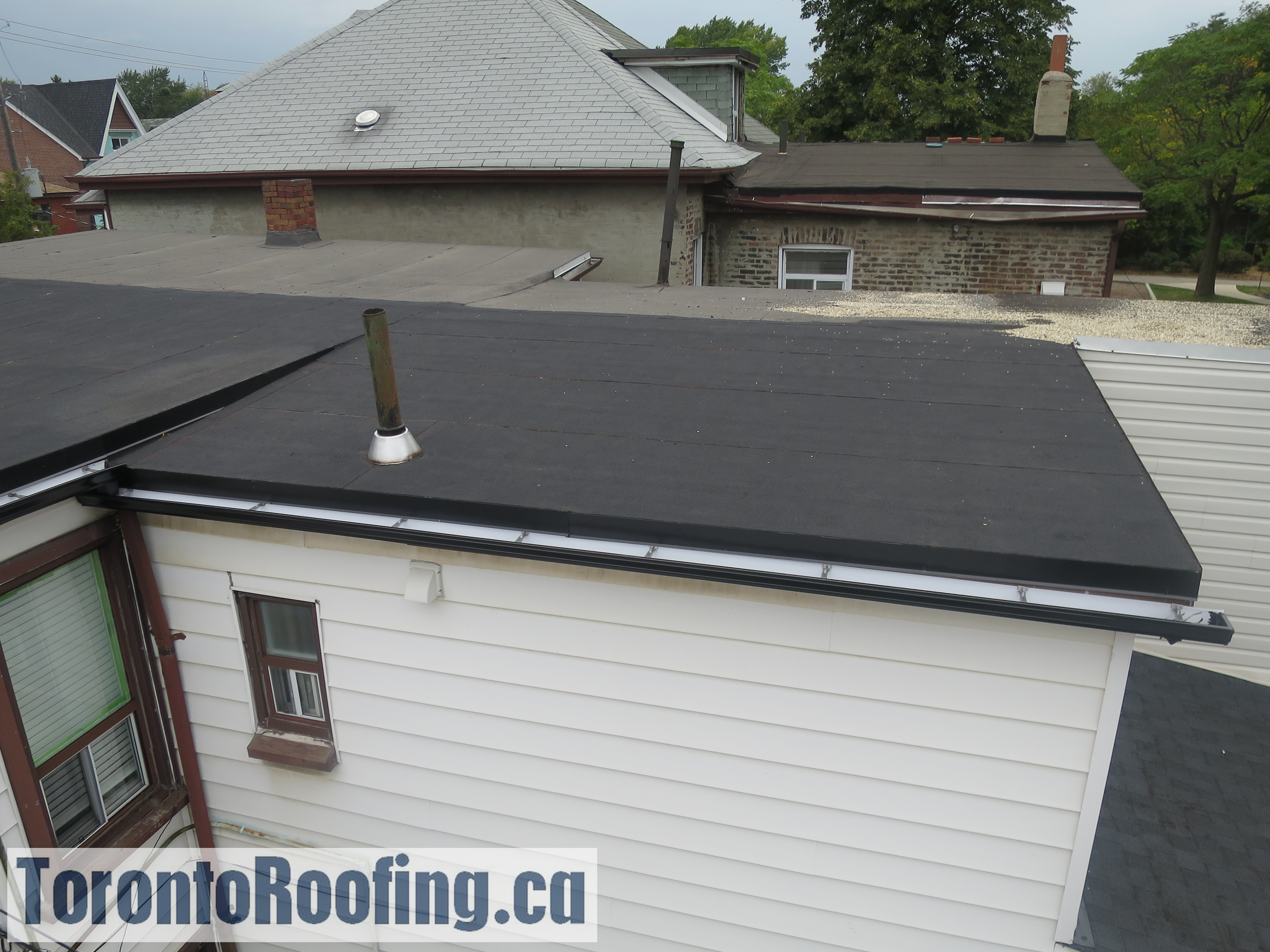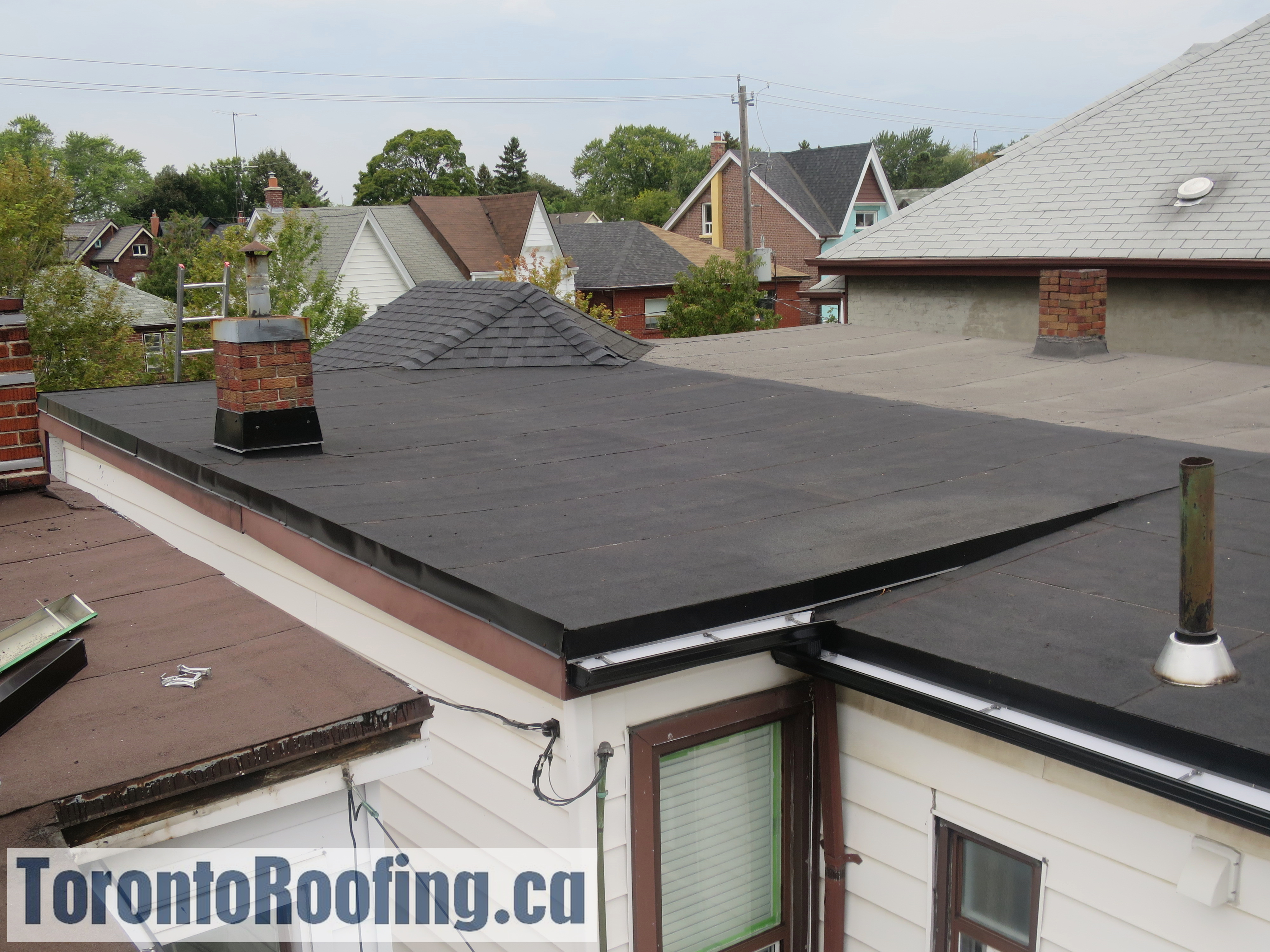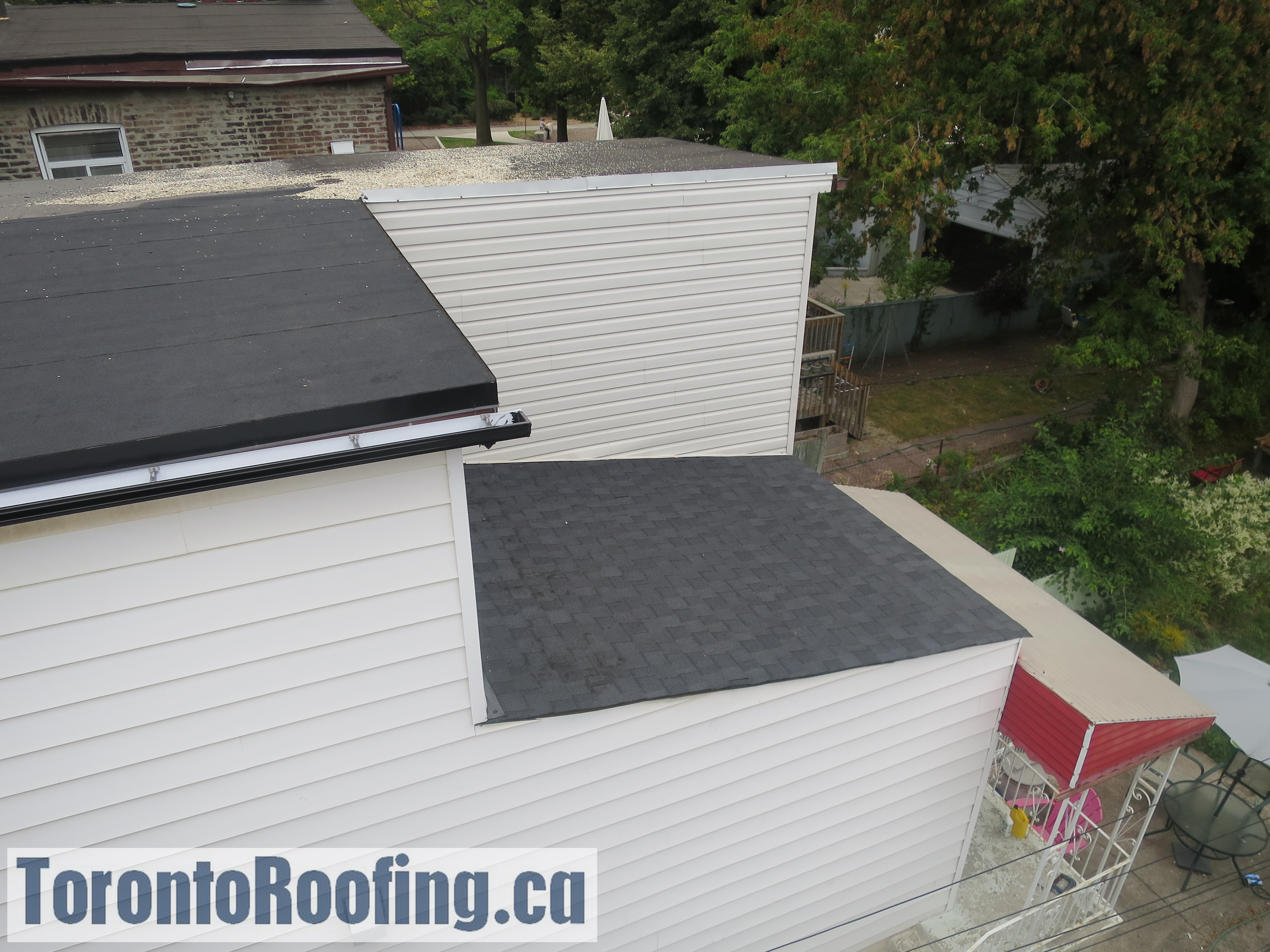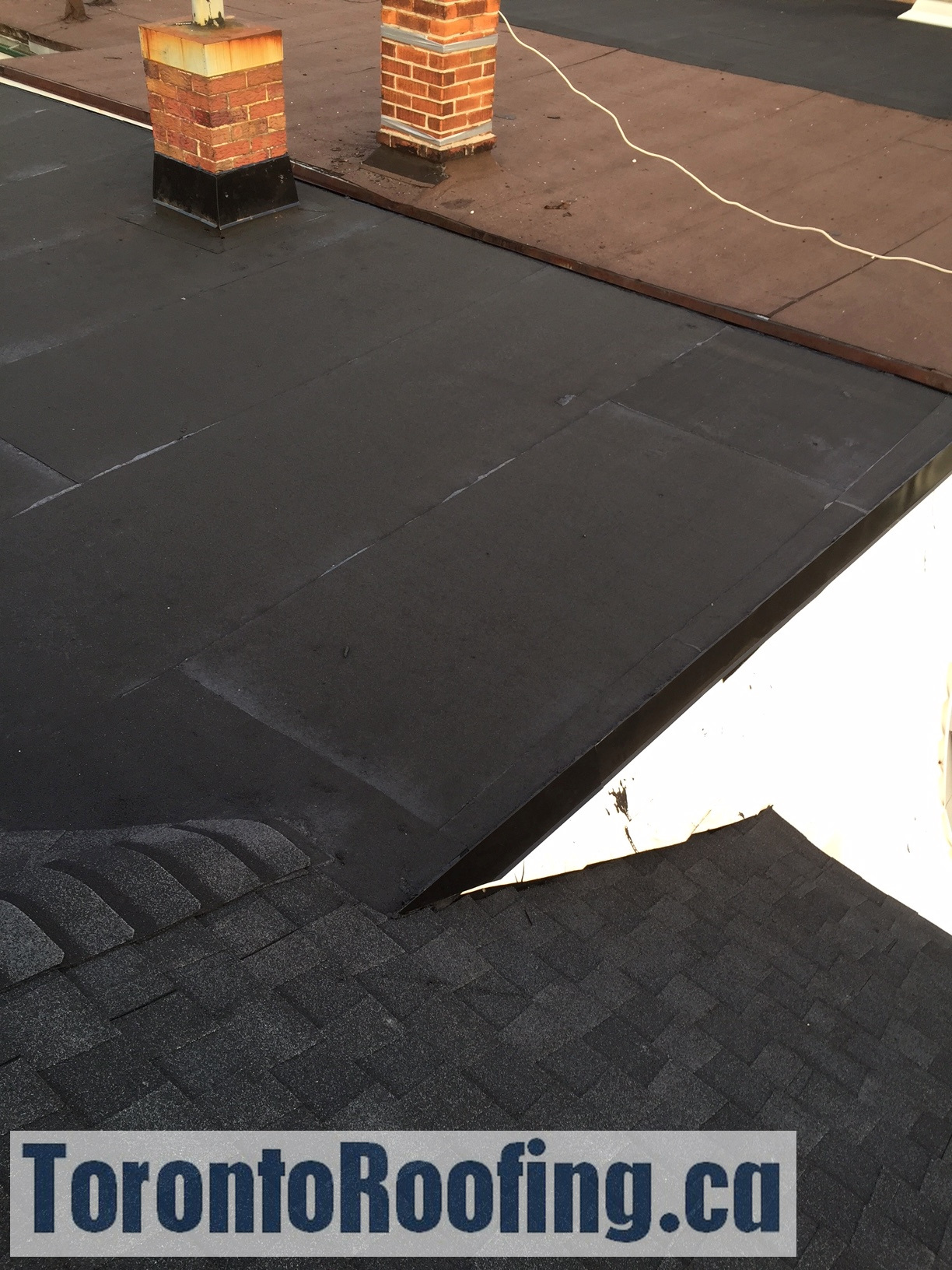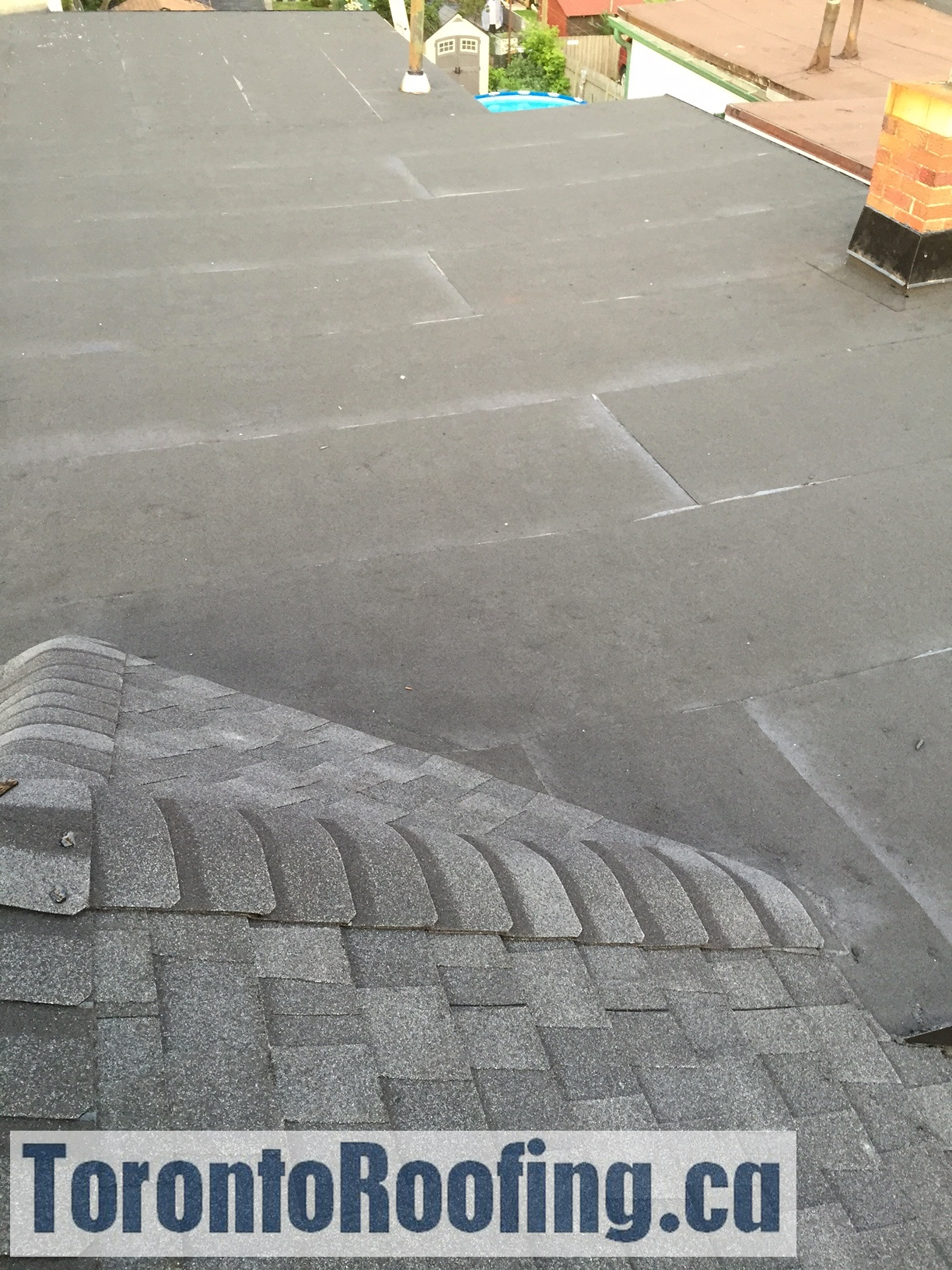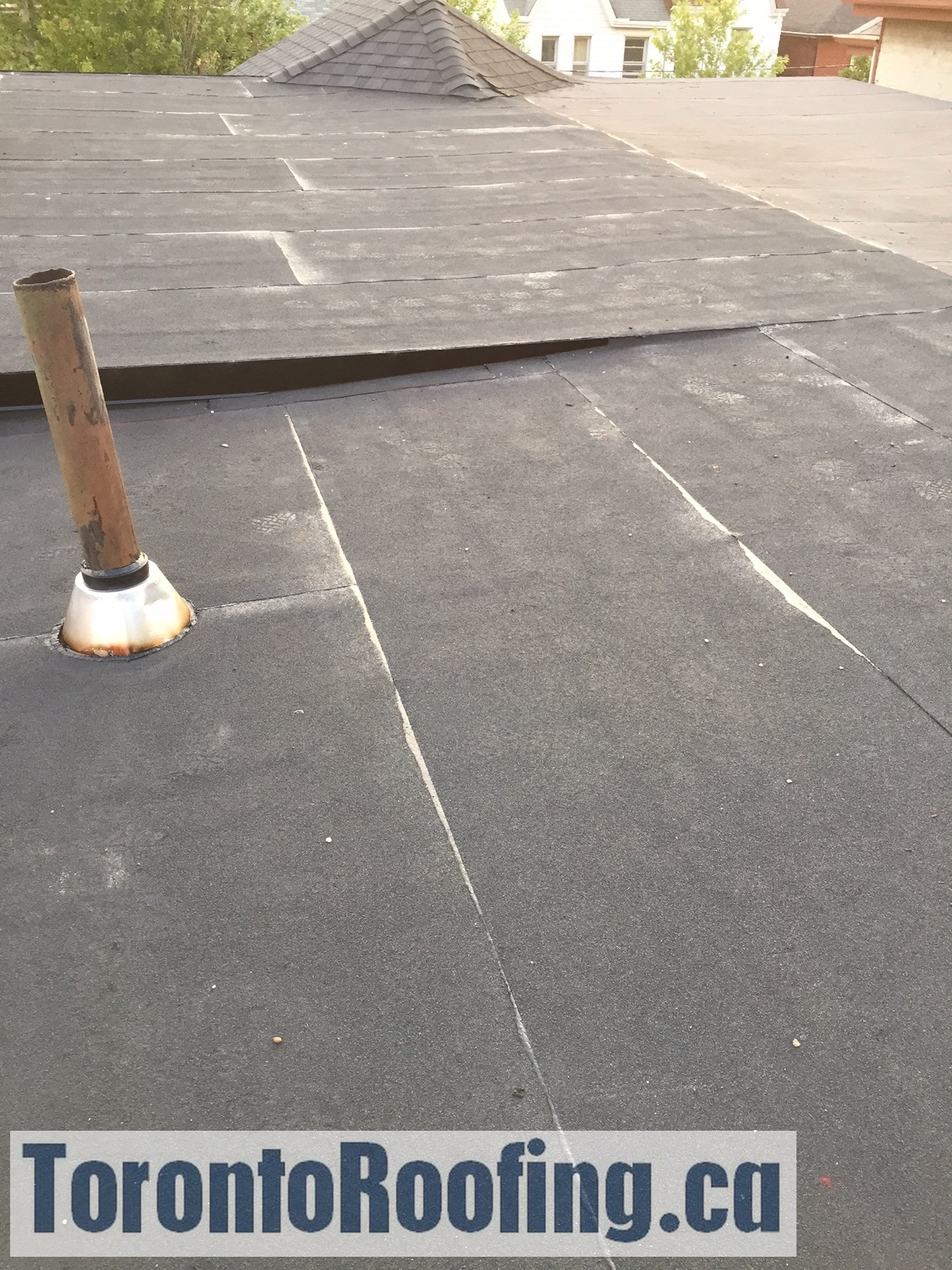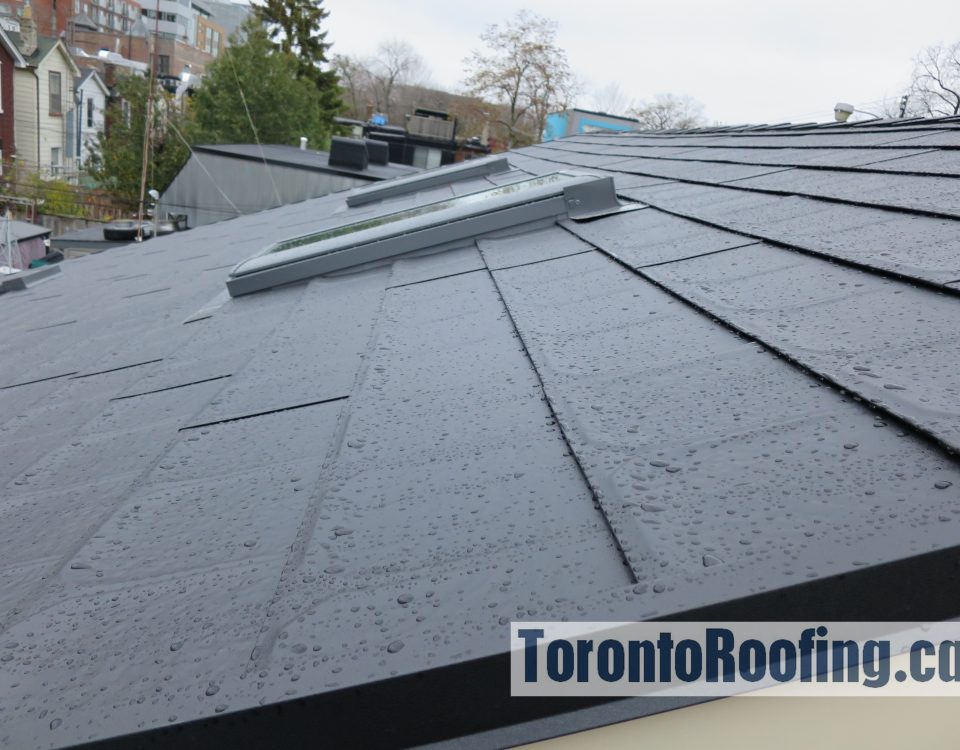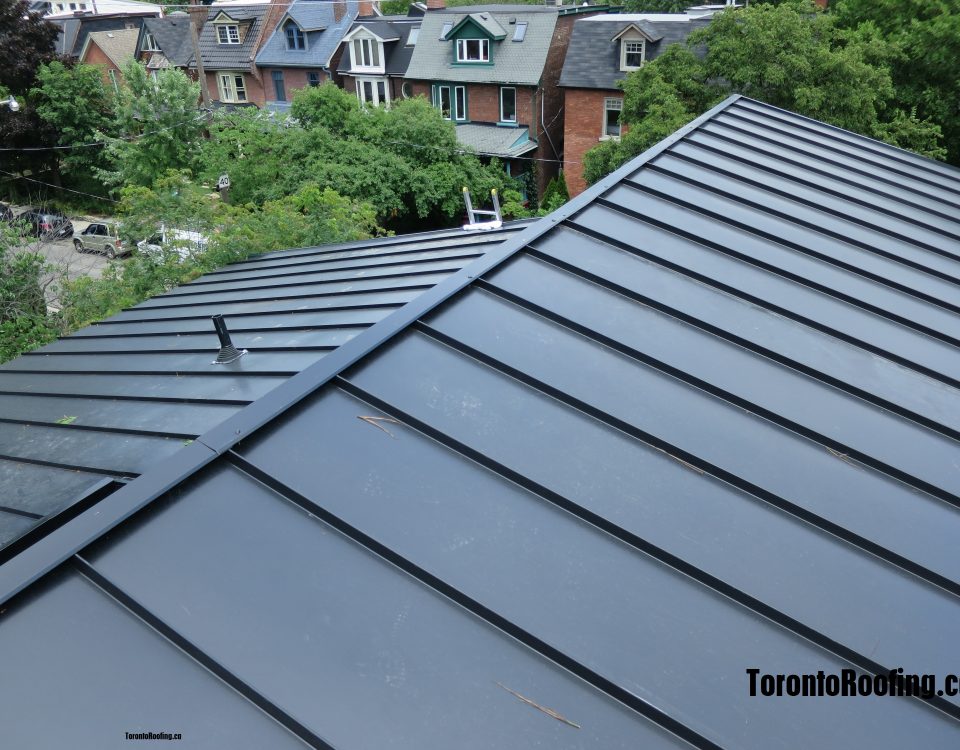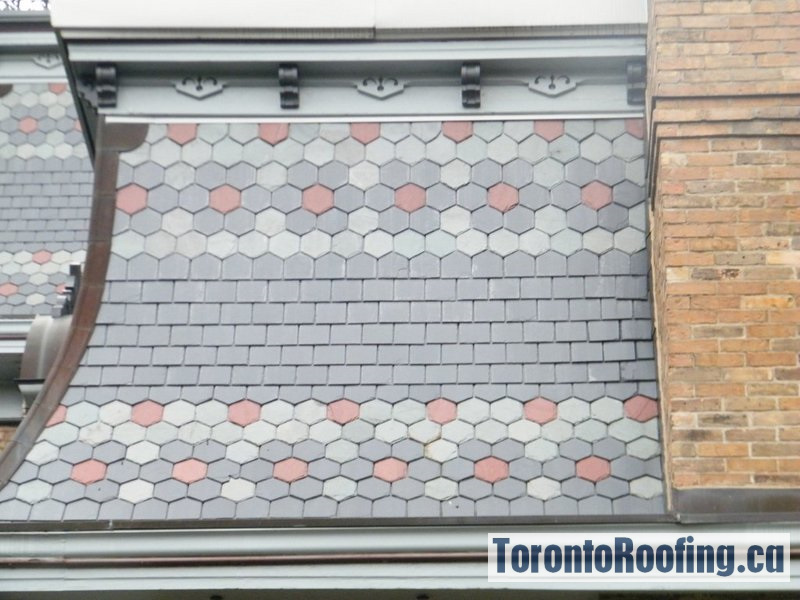- Have any questions?
- 416-824-6111
- Sales@TorontoRoofing.ca
Factors Affecting Your 2 Ply Modified Bitumen Flat Roofing Membrane System

Roofing, Siding, Eavestrough / Gutters, Soffit, Fascia & Skylights in Burlington
September 18, 2015
Roofing Underlayments – Grace Ice & Water Shield
October 20, 2015Factors Affecting Your 2 Ply Modified Bitumen Flat Roofing Membrane System
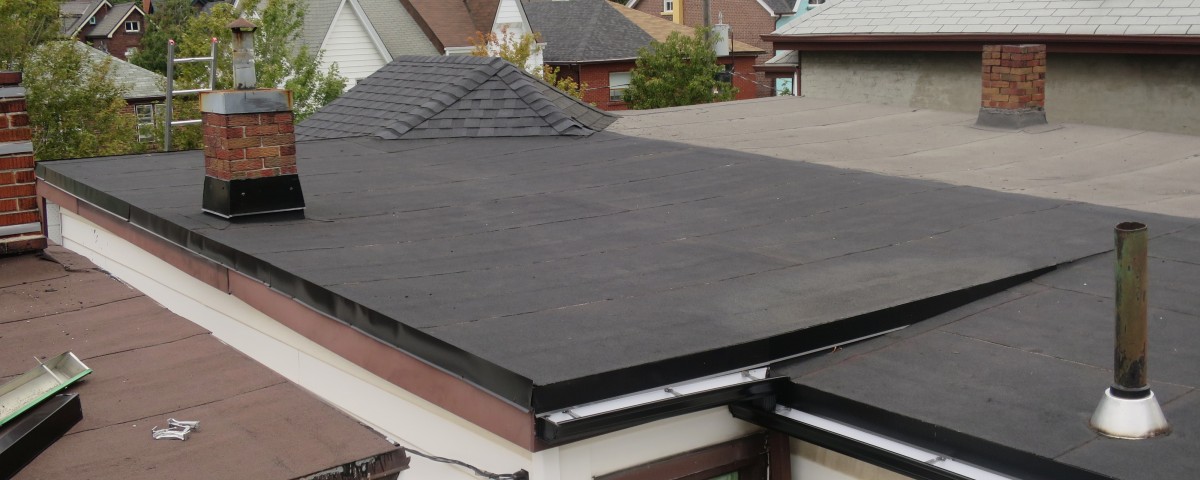
Many issues contribute to the failure of a flat roofing system. In addition, building location and what it’s being used for are also factors that need to be taken into consideration. In order to improve the performance and longevity of your flat roof replacement, several factors should be discussed with your professional roofing contractor to ensure an installation that will carry you through to the end of its expectation.
Following is a list of items that should be on your radar and someone well versed in 2 ply modified bitumen flat roofing installations should be able to answer all your questions:
- FLAT ROOF SLOPE
The slope of your flat roof determines how well your roof sheds water. Pooling or ponding water is the greatest issue with premature commercial or flat roof deterioration. It is caused by insufficient roof slope and can lead to many issues, including having to replace your entire flat roofing system years ahead of the projected lifespan. It is recommended that the roof be sloped a minimum of 1 percent in order to minimize this issue. For more detailed information on this, please check out our blog on Tapered Insulation For Flat Roofing.
- FLAT ROOF DRAINAGE
Your roof’s drainage system disposes of the water after your slope has shed it from the flat roof membrane. An inadequate drainage system causes many of the same problems that a poorly sloped roof will. The most important question to ask is whether or not there are enough drains to handle the volume of water being accumulated. There are options to use internal drains or scuppers. You must ensure the roof drainage system matches the size and slope of your roof. The volume of water routed to each drain can be increased as the slope increases, and you must ensure the scupper openings are large enough to handle the volume of water expected to hit your roof.
- FLAT ROOF R-VALUE
The R–value is a measure of thermal resistance. It is the ratio of the temperature difference across an insulator. The higher the R value, the better. Consider your roof’s existing R-value and how effective your heating & cooling system operates. You may choose to beef up your insulation (raise the R value), in order to gain efficiency in your home. The best way to achieve adequate insulation and also ensure proper drainage would be to use tapered insulation, effectively “killing two birds with one stone”. This method of addressing both problems will be more cost-effective than altering the structure of the roof.
- FLAT ROOF STRUCTURAL LOADS
Another important thing to think about is the weight your roofing system can support. They are usually engineered to handle wind and snow loads based on historical data for the geographic region. In the instance of flat roof replacement, the structural load would have been determined, and adequate framing would exist to handle the desired structural strength.
If you’re considering changing the existing flat roof system to one that would add additional weight by nature of the material or application, measures must be taken to support the additional load within the structure (even if the old roofing system was removed). Some systems could easily cause the roof to collapse if built upon framing not meant to withstand the increased load. It is imperative to compare the weight of the new roof system to the limits of the original roof system. It is highly recommended you consult with an engineer if you are switching from one system to another to confirm the weight the structure can safely handle.
- FLAT ROOF DECK DEFICIENCIES
Any pre-existing structural problems affecting the flat roof deck should be addressed before installing a new flat roofing system. Any structure framed out in wood, often has joists that have bowed from years of constant load, in turn creating the problem of pooling or ponding water. In instances where remodeling and renovations have taken place, elevation changes are a common occurrence. The installation of a new roofing system is the time to address any revisions that would improve the longevity of the roof and increase its lifespan. Decking issues should be addressed with your contractor up front and be factored into your roof replacement project. Installing any new roofing system over top of a failing system or deficient structure will leave you with the same issues compounded. It is recommended your existing system be removed right down to the decking and rebuild from scratch.
6. WIND UPLIFT
All roofing systems experience positive air pressure as wind passes across the deck. This creates a suction effect that pulls the roof system away from the structure. If your system is not properly anchored, enough uplift can tear the membrane away from the deck causing it to separate and fail, or even cause significant structural damage.
To minimize the chance of roofing system failures, always remember to consider the quality of material being used.
Following are some photos of a recent 2 ply modified bitumen membrane roofing system installation, along with new eavestrough / gutters installed by Toronto Roofing.ca

